Advertisement
Feared and fascinating, 'Bats!' take flight in Salem
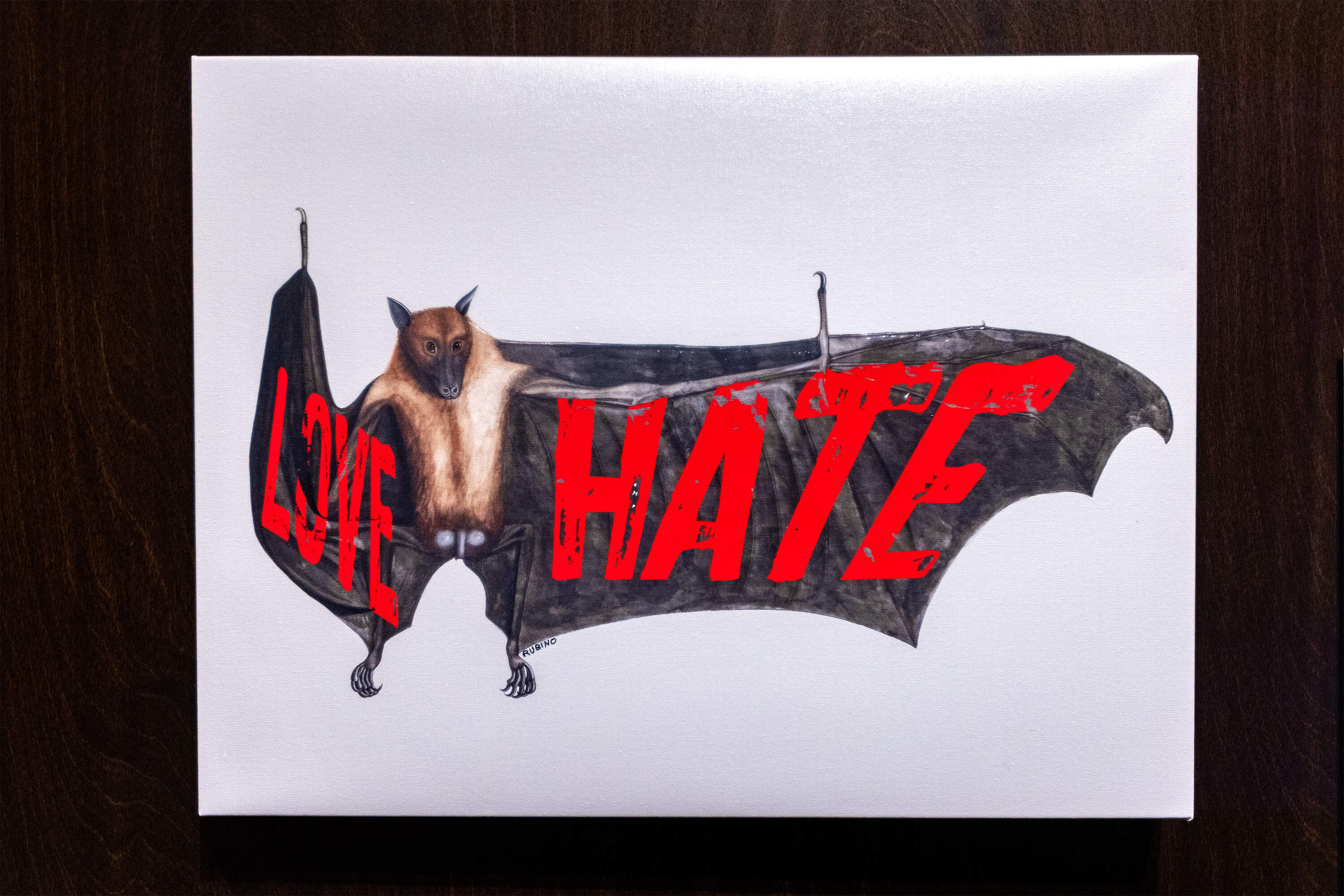
Halloween is creeping up, and the Peabody Essex Museum in Salem is ready with an exhibition that celebrates creatures of the night. No, not ghosts or werewolves — but bats. The show blends art and science to raise awareness about these furry, flying mammals that have been feared for centuries.
When you hear the word “bat” maybe you picture beady little eyes. Or fangs. Or vampires. Janey Winchell knows full well that a lot of people get the heebie-jeebies from bats.
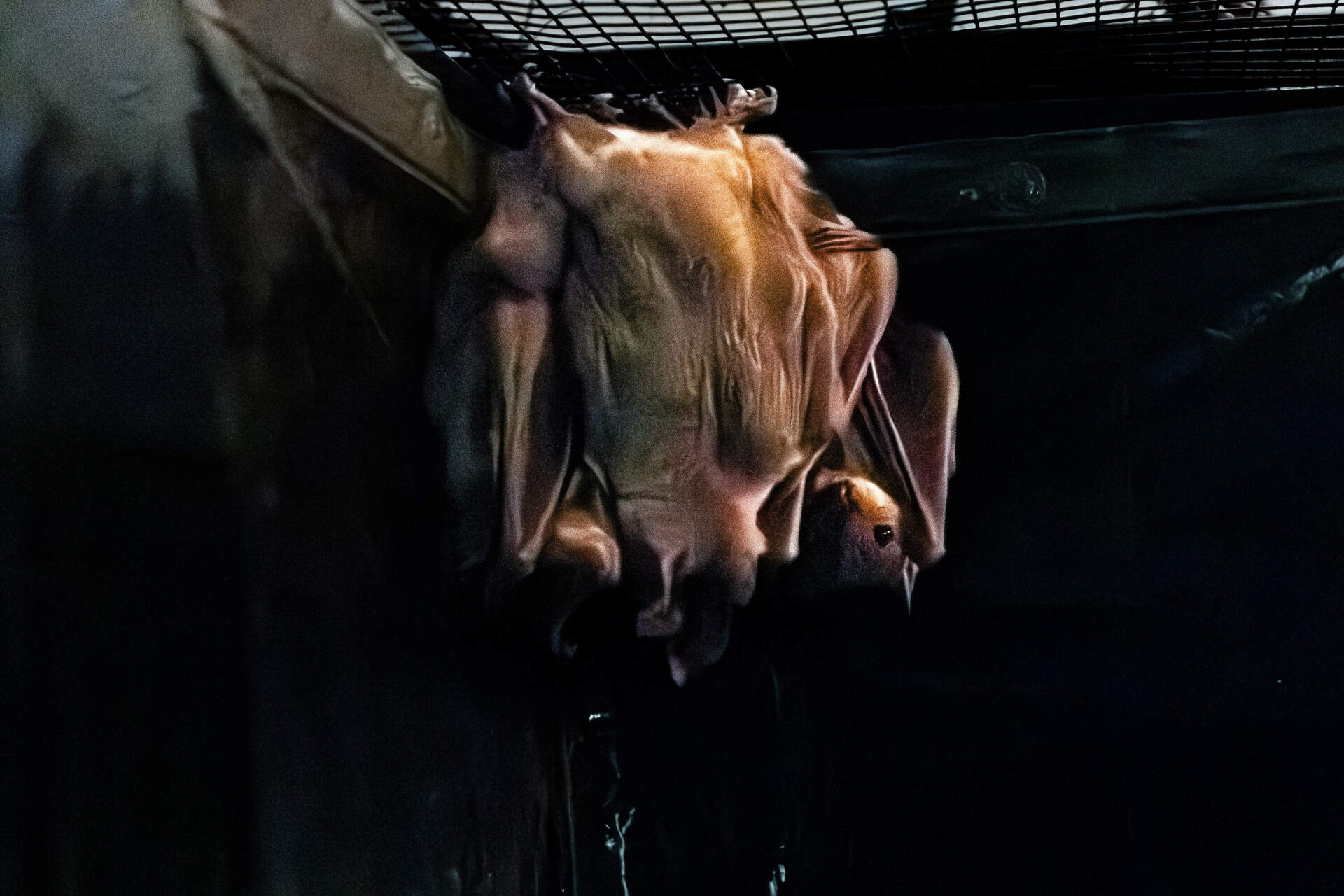
“Oh, they are so misunderstood. We have all kinds of fears about bats that are not based in reality,” she said. “They will not get caught in your hair. They are truly our allies. They are superheroes without capes.”
Winchell set out to prove that through this exhibition, titled “Bats!” (note the exclamation point). She studied them for her graduate degree in biology and directs PEM's Art & Nature Center. For her, the show is something of an empathy campaign for these mysterious, nocturnal creatures.
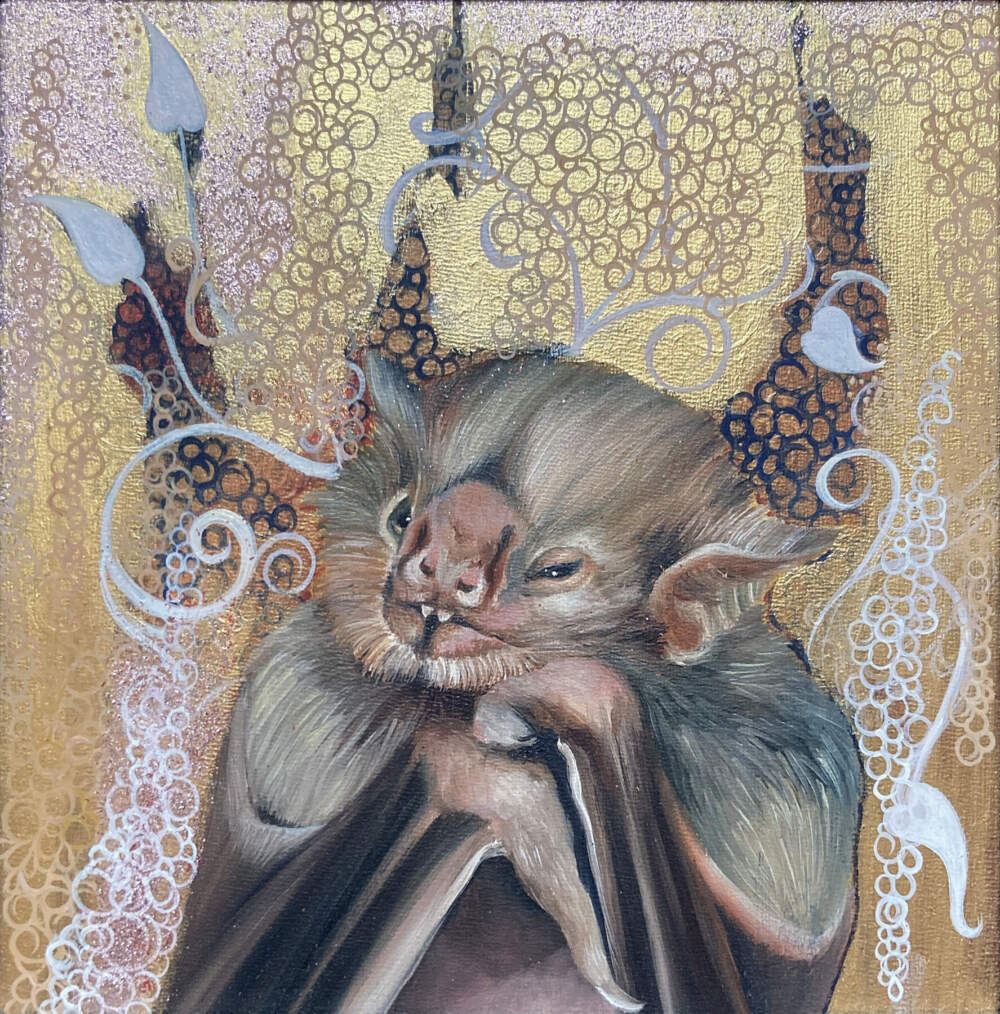
An atmospheric soundscape by David Yann Robert draws us into the gallery. It's filled with contemporary artworks, pop culture memorabilia, cultural artifacts and historical depictions. Some are from the museum's collection, others are part of a traveling conservation exhibition. Together, they illustrate how people have loved and hated bats through the ages.
A wall label explains how the Bible portrayed them as “unclean” and “unnatural.” In the Middle Ages, bats represented the devil. The museum's reproduction of a 17th-century woodblock print features a coven of witches making offerings to a winged Satan. Winchell said the connection between bats and blood-sucking vampires was cemented by “Dracula,” Bram Stoker's gothic 1897 novel. “He's the first one who had Dracula converting into a bat.”
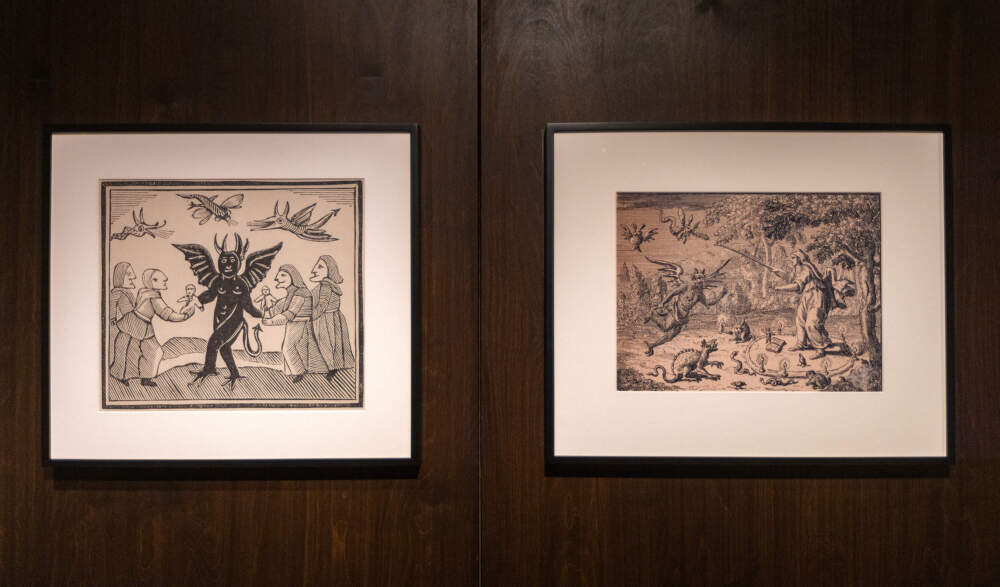
Actor Bela Lugosi shape-shifted as Dracula in the classic 1931 horror film. There's a photo of him in the show, and a poster of the vampire posse from the modern-day, mockumentary TV series “What We Do in the Shadows.” Batman is also represented, along with Count Chocula and Count von Count from "Sesame Street."
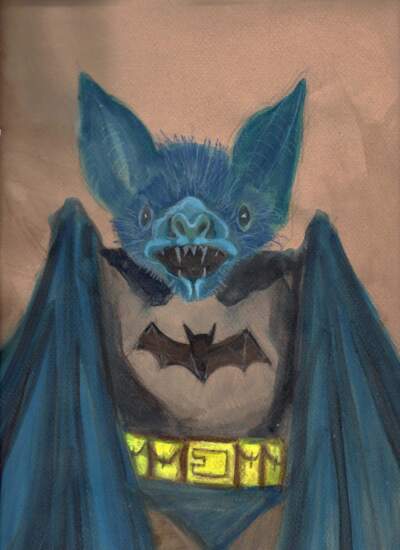
The exhibition weaves between fiction and fact to help us understand why we might be scared of bats. "Oftentimes bats are photographed with their mouths open, and that can evoke a feeling [that] they're being aggressive," Winchell said. "But more often than not, they're actually echolocating to visualize what's in front of them." Visitors can listen to their high-pitched travel and hunting sounds that have been slowed down for the human ear.
Of the more than 1,400 different species of bats, only three drink the blood of animals or birds. “A lot of people don't realize there [are] pollinating bats,” Winchell said. “But that's actually an important role for bats around the world, including in the United States.” Bats are also the number one predator for night flying insects. “Without bats, we'd have to rely so much more on pesticides for controlling crop pests, and even bothersome insects like mosquitoes,” she noted.
These are some of the reasons why Winchell calls them superheroes. But most of the world's bat species are in decline, including the little brown bat that's been decimated by White Nose Syndrome in Massachusetts. Bats are also vulnerable to climate change and deforestation. Winchell added some people eradicate bat colonies thinking they're pests. “That's another important reason for raising awareness,” she said, “because bats have been persecuted for such a long time, and they actually have a very slow reproductive rate, they don't rebound quickly.”
Advertisement
But many cultures revere bats. In Asia, they symbolize good fortune. Origami artist Michael LaFosse folded about 300 paper bats that roost on a corner wall. “This design I call the 'Happy Good Luck Bat' — it's colored red, a lucky color in China,” he said. “You can see the smile, it's a very happy-looking bat.”
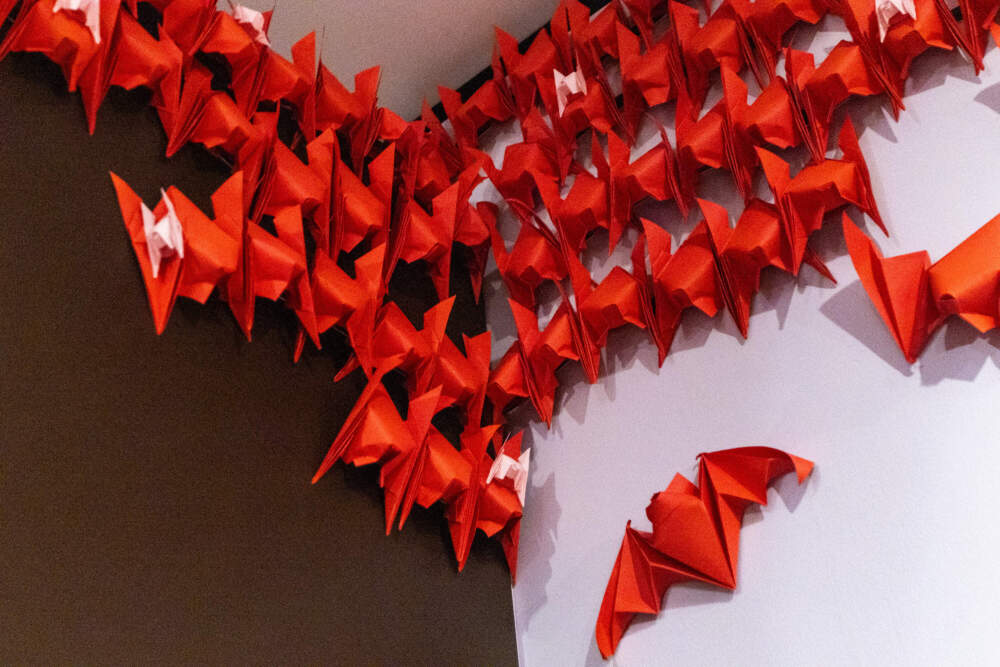
LaFosse, who's also a biologist, finds bats fascinating. He has studied their forms and faces for decades. His first origami piece was a life-like vampire bat, which is also in the show.
“What you don't understand, you tend to fear,” LaFosse said. “And if you take the time to do the research, they become less threatening, and even in some cases, just totally lovable.”
The show's guest stars are pretty cute. Winchell was excited to introduce a small, visiting colony of real Egyptian fruit bats. They're huddled in a spacious viewing hutch. “In my mind, these are bat ambassadors,” she said, “and we're doing everything we can to make them feel comfortable and taken care of.”
A local veterinarian with bat expertise is on-call, and Art & Nature Center staff members have been trained to feed the bats. As program specialist, Nathan Peddie prepared to give them a mid-morning snack of bananas. "I never really interacted with bats up until this point," he said. "They were never really something I saw or even thought about outside of pop culture. So it is very interesting to see them so close now."
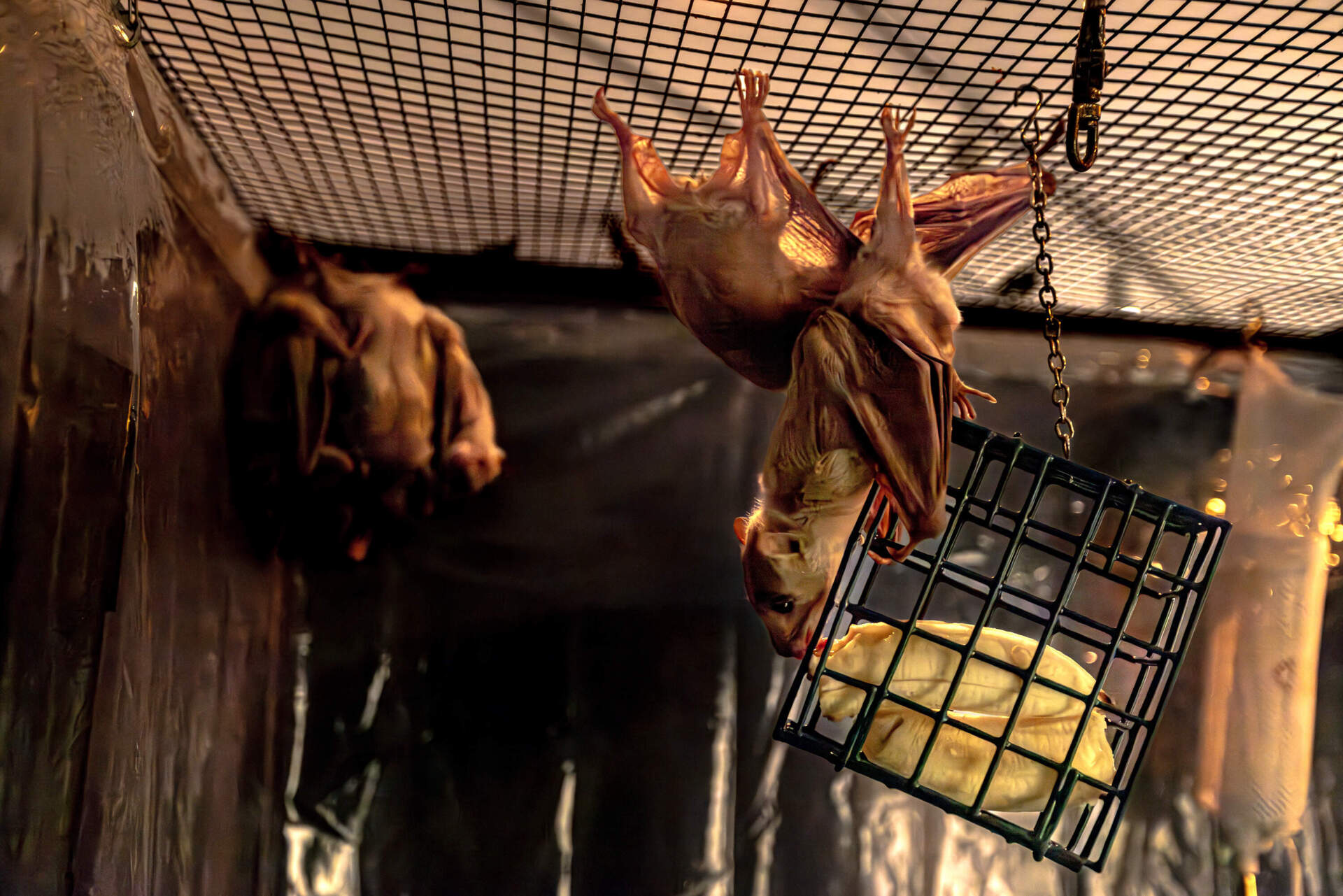
Winchell hopes visitors feel the same way since most of us only encounter a live bat if it gets inside the house.
“For people to have a moment where they can just be with bats as the bats are — and just to have a moment to witness them — I'd ideally like them to feel positive about bats,” she said, “but most importantly, for them to have an appreciation for the role that bats play around the world.”
Winchell also hopes this show encourages people to look up — at dusk — so they can catch these superheroes' swooping silhouettes against the darkening sky.
"Bats!" is on view at the Peabody Essex Museum through July 28.
This segment aired on October 30, 2023.
